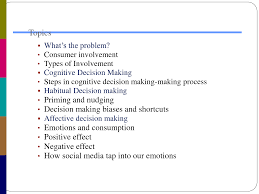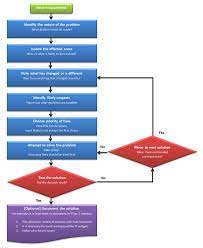Steps in the Decision Making Model
Decision making is a crucial process that individuals and organizations engage in on a daily basis. It involves identifying a problem, gathering relevant information, evaluating potential solutions, and choosing the best course of action. By following a structured decision making model, one can make more informed and effective decisions. Let’s explore the steps in the decision making model:
- Identify the Problem: The first step in the decision making process is to clearly define and understand the problem or decision that needs to be made. This involves identifying the goal or desired outcome.
- Gather Information: Once the problem is identified, gather relevant information that will help you understand the situation better. This may involve conducting research, collecting data, or seeking input from others.
- Identify Alternatives: Brainstorm and list out all possible solutions or alternatives to address the problem at hand. Consider both traditional and creative options.
- Evaluate Alternatives: Assess each alternative based on criteria such as feasibility, cost, impact, and alignment with goals. Compare the pros and cons of each option to determine which one is most suitable.
- Make a Decision: After evaluating all alternatives, make a decision by selecting the best course of action that aligns with your goals and values. Be decisive and commit to your chosen solution.
- Implement the Decision: Once a decision is made, create an action plan for implementing it. Assign responsibilities, set deadlines, and allocate resources as needed to ensure successful execution.
- Monitor and Evaluate: After implementing the decision, monitor its progress and evaluate its effectiveness. Make adjustments as necessary to improve outcomes or address any unforeseen challenges.
By following these steps in the decision making model, individuals and organizations can navigate complex situations with clarity and confidence. Remember that decision making is an ongoing process that requires critical thinking, analysis, and adaptability. With practice and experience, you can enhance your decision making skills and make better choices in all aspects of life.
Key Steps and Considerations in the Decision Making Model: Frequently Asked Questions
- What is the first step in the decision making model?
- How important is gathering information in the decision making process?
- Why is it crucial to identify alternatives when making a decision?
- What criteria should be considered when evaluating alternatives?
- How can one ensure they are making the best decision?
- What steps are involved in implementing a decision?
- Why is monitoring and evaluation essential after making a decision?
What is the first step in the decision making model?
The first step in the decision making model is to identify the problem or decision that needs to be addressed. This initial stage sets the foundation for the entire decision making process, as it involves clearly defining the issue at hand and understanding its significance. By pinpointing the problem, individuals and organizations can focus their efforts on gathering relevant information, exploring potential solutions, and ultimately making informed decisions that lead to effective outcomes. Identifying the problem serves as a critical starting point that shapes the direction of subsequent steps in the decision making model.
How important is gathering information in the decision making process?
Gathering information is a critical step in the decision making process as it provides the foundation for making informed and effective decisions. Without sufficient information, decision makers may overlook key factors, misinterpret situations, or make biased judgments. By gathering relevant data, conducting research, and seeking input from various sources, individuals can gain a comprehensive understanding of the problem at hand and evaluate potential solutions more accurately. Information gathering helps decision makers assess risks, identify opportunities, and anticipate outcomes, ultimately leading to better decision outcomes and increased confidence in the chosen course of action.
Why is it crucial to identify alternatives when making a decision?
When making a decision, it is crucial to identify alternatives because having multiple options allows for a more comprehensive evaluation of potential solutions. By considering various alternatives, individuals can explore different approaches to addressing the problem at hand and increase the likelihood of finding the most effective and suitable solution. Identifying alternatives also helps in mitigating risks and uncertainties by providing fallback options in case the initial choice does not yield the desired results. Additionally, comparing and contrasting alternatives enables decision-makers to make more informed choices based on a thorough analysis of the available options, ultimately leading to better outcomes and increased satisfaction with the decision-making process.
What criteria should be considered when evaluating alternatives?
When evaluating alternatives in the decision making process, it is important to consider a variety of criteria to ensure that the best possible choice is made. Some key criteria to take into account include feasibility, cost, impact, risk, time frame, alignment with goals and values, potential outcomes, and stakeholder preferences. By carefully assessing each alternative against these criteria, decision makers can gain a comprehensive understanding of the implications and consequences of their choices. This thorough evaluation process helps in selecting the most appropriate alternative that not only addresses the problem at hand but also maximizes positive outcomes and minimizes risks.
How can one ensure they are making the best decision?
Ensuring that one is making the best decision involves following a structured approach in the decision making process. By carefully identifying the problem, gathering relevant information, evaluating alternatives, and considering the potential outcomes, individuals can increase the likelihood of making a sound decision. It is important to weigh the pros and cons of each option, consider long-term consequences, and align the decision with personal values and goals. Seeking input from trusted advisors or experts can also provide valuable perspectives to help make an informed choice. Additionally, reflecting on past experiences and learning from both successes and failures can contribute to improving one’s decision making skills over time. Ultimately, by being thorough, thoughtful, and open-minded in the decision making process, one can strive to make the best possible decision in any given situation.
What steps are involved in implementing a decision?
Implementing a decision involves several key steps to ensure its successful execution. First, it is essential to clearly communicate the decision to all relevant stakeholders and team members involved. Assigning responsibilities and outlining specific tasks and timelines is crucial for effective implementation. Next, allocate necessary resources and support to facilitate the execution of the decision. Monitoring progress, evaluating outcomes, and making adjustments as needed are vital components of the implementation process to ensure that the decision aligns with desired goals and objectives. Effective communication, strategic planning, and ongoing evaluation are essential for a smooth and successful implementation of a decision.
Why is monitoring and evaluation essential after making a decision?
Monitoring and evaluation are essential after making a decision because they allow individuals and organizations to assess the effectiveness and impact of their chosen course of action. By monitoring the progress of implementation, one can identify any deviations from the plan, address potential challenges early on, and make necessary adjustments to ensure that the decision is yielding the desired results. Evaluation helps in measuring the outcomes against the initial goals and objectives, providing valuable insights into what worked well and what could be improved for future decision making. This continuous feedback loop through monitoring and evaluation enables continuous improvement, learning from past decisions, and enhancing decision-making processes in the future.




